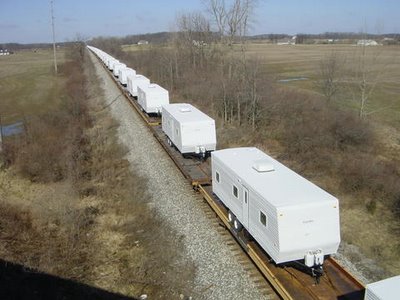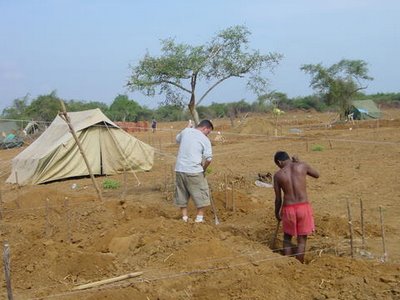Wes Janz Interview

[Life in the gecekondus, Istanbul, Turkey. Photo by Amal Cavender (2005).]
Part of what's so fascinating for me about a "squatter urbanism" is the sheer ingenuity and human spirit that allows people to reclaim what might be deemed urban dead space - or, as Wes Janz sees it, "leftover space."
"The leftover is a potent category" he says. It is a place where "someone or something typically seen as worthless can be understood simultaneously to be worthwhile. "I like this shifted perspective. Is a “slum” a place of poverty and pain, as well as a place of vibrancy and life? What will the self-builder teach me, an architect? Am I the homeless one? Have I lost my way?"

[This man lives in a bus shelter in Buenos Aires, Argentina. Photo by Wes Janz (2006).]
Wes is an architectural educator and is currently working on a book, One Small Project, which wants to help reclaim the narrative of leftover people from the typical media driven perceptions which generally depict squatter settlements, homeless encampments, and shanty towns as human trash, urban scourge, disease.

[FEMA trailers en route to the gulf coast, Muncie, Indiana. Photo by Wes Janz (2006).]
I recently wrote an interview with him for Archinect about his students' relief efforts in Sri Lanka, the devastation of the American south, building trust with communities by building to learn, he says. "I’m less and less interested in affecting someone else’s life, in being an agent of change. More and more, I’m interested in being changed and in preparing myself to be an effective respondent."

[Digging house foundations in Kalametiya, Sri Lanka, through the CapAsia student field study program. "As important, if not more so, “building to learn” refers to learning about one’s self in relation to the “other,” rethinking one’s place in the world, and questioning, fundamentally, how one chooses to engage the world and its people first as a fellow human being, then as architect, planner, or designer." Photo Wes Janz (2005).]
From disaster landscapes to urban dumpsters, timber pallete homes to scrap compiler "parts kits", skip around and scavege some bits and pieces of the interview, there is a lot to investigate including a diverse bunch of resources exploring the culture of urban leftovers all over the world.

[Bay St. Louis, Mississippi four months after Hurricane Katrina. Photo by Wes Janz (2005).]
It is amazing, nearly 2 billion people are not only hacking it in some of the worst living conditions found in the world today, but in some cases these communities are shaming the developed world with their resourcefulness and respect for material and space.
Ultimately, what do we stand to learn from them, about how to remake urban space out of raw city scraps, salvaged bldg-body parts, ruined pastures and topographies of waste; the architectural ingenuity of inhabited sidewalks, maximized real estate down by the riverbeds, an oceanic economy of lost goods sifting in and out of the railroad stations, making do at the border -- squatting is the ultimate political act -- this grand backlash to the exploits of corporate militarism and fortress consumerism; innovating their own ecologies; squatter urbanism as a phase of post-capitalist landscape bioremediation; a bottom-feeders's era of re-engineerng the global economy.
Or, well, whatever, check out the interview in full here, Wes brings it all back down to earth.







0 Comments:
Post a Comment
<< Home